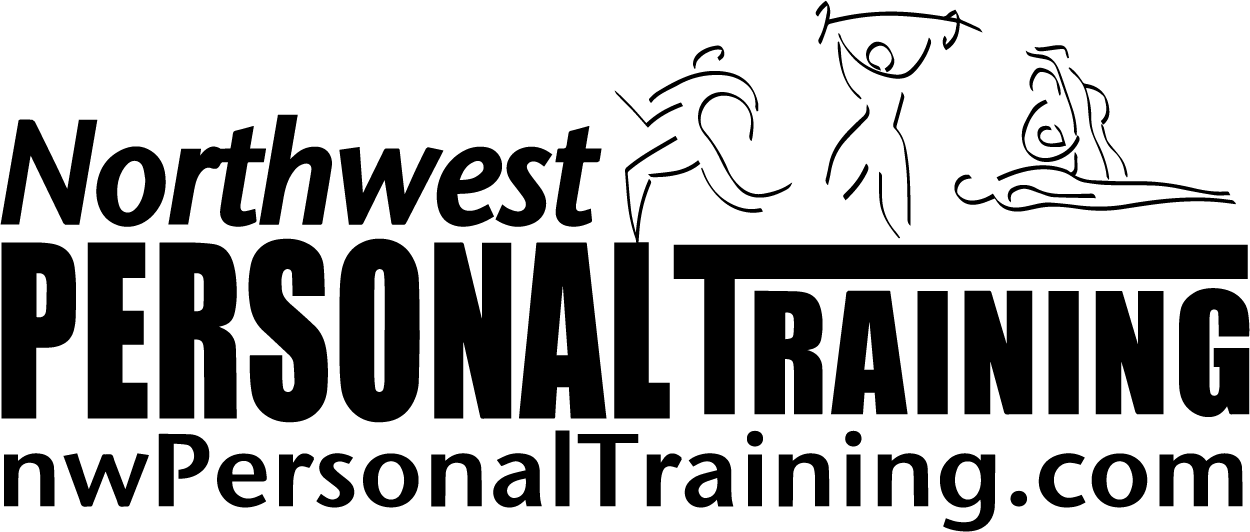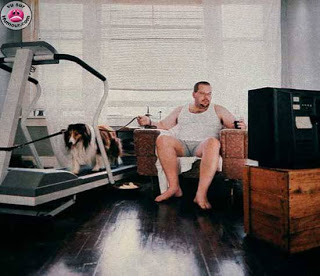As a Personal Trainer, the number one request I get from clients is fat loss. Since I received a lot of emails after my last post on high intensity versus low intensity exercise and how that translates to fat loss, I’m going to stay on this topic and cover the Top 10 things you can do to lose fat – safely, effectively and permanently. You’ll only get tips from me that will provide lasting, long-term results. I’ll cover the first five today and the last five on Monday.
It’s interesting to note that these days the general public is more health-conscious and the availability of low and no-fat products has increased dramatically and yet, our population continues to get fatter. In fact, the average adult weighs 8 pounds more than just a decade ago!
So why do we continue to gain weight? Some researchers have estimated that our population expends 500-800kcal less per day compared to a few decades ago because of labor-saving devices like escalators, elevators, remote controls, computers, and urban transportation. We don’t even have to leave the house for fast-food! If we do go out for dinner, Valet Parking cuts out the few blocks of walking to our vehicle. We’ve got to face it – laziness rules! Case in point – analyze this photo closely.
We also live in a society where food is in abundance. Portion sizes tend to be huge and processed foods fill our cupboards and fridges. Some researches have suggested we consume 100-300kcal more per day than a few decades ago. Expending less energy, consuming more food and a society where exercisers are a minority results in a society that is getting fatter!
So what can you do about it? You’ve got 4 choices: diet, exercise, both or liposuction. The first option will definitely result in failure. Ninety-eight percent of people who go on diets gain the weight back. It appears that losing the weight in the first place, is not the hard part. In fact, people successfully lose weight all the time. It’s keeping the weight off that’s the hard part. The problem is that when you diet you lose valuable, energy-burning muscle tissue which drops your metabolism making it easier to put the weight back on. And secondly diets are, by nature, a short-term phenomenon. You often feel deprived during the diet-stage and thus, once you’ve lost the desired weight you return to old habits and patterns and the weight is quickly regained.
The second option to lose fat is exercise. This is a good choice but unfortunately, for many people, exercise by itself is a painfully, slow process. A fat-loss exercise program may exhibit a 2% change in body-fat over a 12-18 week period which would translate into 3 pounds of lost fat. That’s equates to about a pound lost per month. When people are looking for immediate results, they often don’t have the patience to wait!
The third option is to exercise and diet simultaneously. Research has found this method to be most successful at reducing body fat and, most importantly, helping to keep it off.
The final option, surgery/liposuction, is a costly choice. Furthermore, if the diet and exercise habits of the individual are not altered, the individual will eventually get fat again. Even though they may have less fat cells, the fat cells they still have can get bigger!
Here’s the Top 10 Tips for a Fat Loss program that incorporates exercise and healthy eating that will ensure you reduce your body fat safely, effectively and permanently:
#1. Aerobic Exercise: The American College of Sports Medicine recommends aerobic exercise 5-7 days/week for 20-60 minutes each session to maximize fat loss. If you’re just starting with exercise you may want to take a couple months to progress slowly into this 5-7 days/week range. Aerobic activities like walking, running, cycling, swimming, fitness classes, hiking, cross-country skiing, stairclimbing and rowing will do the trick. These activities expend a lot of energy and will burn up a lot of fat and thus, should be a focus of your exercise program. The intensity of your aerobic workouts should be within a 5-8/10 on the rating of perceived exertion scale. This means you should be able to work up a sweat, feel your heart pumping and be breathing more rapidly. We also encourage you to split your weekly aerobic workouts into easy, moderate and hard days to vary the intensity and train all energy systems. High intensity interval training will definitely get you in great shape fast allowing you to burn more calories overall during each workout translating into faster fat loss.
#2: Resistance Exercise: Regular strength training workouts are also critical to maximize fat loss. Muscle is an energy-burning tissue and therefore, if you have more of it, your metabolism revs at a higher rate making it easier to burn fat both during and after exercise. You don’t need to spend a lot of time in the weight room. Pick exercises for all the large, major muscle groups and perform just one set of 8-15 reps. You should be able to get in and out of the weight room in 30-40 minutes two to three times per week. These short muscle-conditioning workouts are sufficient to achieve the results you’re looking for and are the best way to actually sculpt your body.
#3: Eat 5 small meals and snacks each day. Studies indicate that when people eat more regularly throughout the day, they are less likely to overeat or indulge in less-healthy choices. Food at regular intervals also maintains a more balanced blood sugar level which keeps your energy levels higher throughout the day. Try to consume smaller meals or snacks every 2-3 hours during the day. Be sure to include protein and high-fiber foods at each meal/snack to help keep you full longer.
#4: Drink 8 glasses of water every day. Our body is 50-60% water and when we are dehydrated, our body and it’s organs and systems don’t function at their optimal level. This limits your ability to exercise intensely and ultimately, will affect your ability to burn body fat. Many scientists also suggest that headaches, minor aches and pains, low energy, sleeping problems and injuries may be a result of dehydration! Eight glasses of water each day will replenish the fluids you lose throughout the day as a result of normal human respiration.
#5: Focus on what you should be eating instead of what you shouldn’t be eating. Ensure you consume 5 vegetable and 3 fruit servings every day. Fruits and vegetables are high in nutrients and water-content and low in fat and calories. It’s much more difficult to overeat when your diet consists largely of fruits and vegetables. If you fill up on your fruits and veggies, you’re going to have less room for the high-fat, nutrient-poor foods.
Stay tuned on Monday to receive the last five tips.
Yours in health and fitness,
Sherri McMillan

